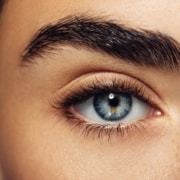At-Home Remedies for Dry Eye

Watch the Cigarette Smoke
Smoking isn’t just bad for your lungs and heart, but it’s bad for your vision as well. If you smoke or live with someone who smokes, it may be the cause of your dry eye. Smoke is notorious for drying eyes out and making them feel irritated. Try to either quit smoking or smoke somewhere with a lot of ventilation like outside.
Use Warm Compresses
Sometimes, you can help to temporarily lear out your clogged tear ducts with a little bit of warm water and a washcloth. All you have to do is take a washcloth, wet it with warm water, and then gently place it over your eyes. The warm, wet water should help to clear out your tear ducts and help you see better.
Use Eye Drops
Another thing you can do at home is to use some over-the-counter eye drops. Eye Drops that are created for dry eye will help to create a lubricating barrier on your eyes, which will lock in moisture and help alleviate your symptoms. All you have to do is apply one drop on the inside of each eye, and it should spread to the rest of your eye and coat it.
Get a Humidifier
Even though the air here in Hawaii is fairly humid, if you still have dry eye, you may want to get a humidifier. The wetter the air is, the more it will soothe your eyes and make them feel comfortable.
Contact our office to learn more about dry eye treatments. Call us today 808.955.3937.










